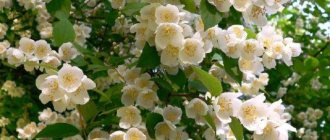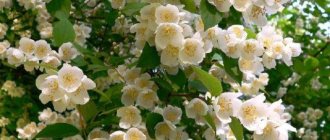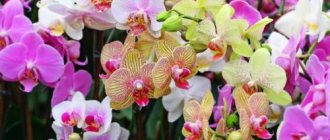When Publius Virgil, an outstanding ancient Roman poet, described the beautiful shepherdess Amaryllis in one of his works, he certainly did not suspect that centuries would pass and another famous person, the botanist Carl Linnaeus, would name one of the flowers by the name “amaryllis” - sparkling. But that’s exactly what happened, and now amaryllis is a fairly popular indoor plant. When it blooms, there is no question as to why it was called “sparkling.” The beauty of the plant is obvious.
Amaryllis: botanical description and appearance
Amaryllis is one of the genera of the Amaryllis family. Linnaeus identified this genus in 1753, although the flower was known to Europeans earlier, under the name lionnarcissus.
But the greatest taxonomist made a serious mistake when he classified hippeastrums, similar flowers, also from this family, as amaryllis. This went on for many years, until the hippeastrums were separated into a special genus. But even now, many flower lovers confuse these two completely different species. However, they have a good excuse, because Linnaeus himself confused the plants!
And distinguishing them, in fact, is not so difficult. There are several sure signs, let’s name just three:
- The amaryllis peduncle is filled inside with soft tissue, while in hippeastrums it is hollow;
- Amaryllis flowers have a pronounced smell, while hippeastrum flowers have no smell, or smell very weakly;
- On the peduncle of amaryllis there are from 8 to 12 flowers, in hippeastrum there are no more than 6, and they are larger.
But let's return to our hero! He is originally from the Cape region of Africa. Many people believe that Africa is a very warm, even hot, continent. And this is generally true. But there are areas here where the climate is not so warm. One of them is the extreme southwest of the continent, where the waters of the Indian and Atlantic oceans meet. The narrow coastal strip has a climate similar to the Mediterranean: with cool winters and alternating dry and hot seasons. Here is the homeland of many endemic plants, including amaryllis.
Amaryllis is a typical perennial bulbous plant. It has narrow, several centimeters, but long leaves, growing from a pear-shaped bulb, with a diameter of 8 to 12 cm. It produces a long, strong peduncle, sometimes two at once. On the peduncle there is an inflorescence of funnel-shaped flowers, from 6 to 12, each with a diameter of 4 to 8 cm. The flowers are six-petaled, with a characteristic pointed tip. As already noted, they have a pleasant, fragrant smell, and a wide variety of colors.
As the amaryllis fades, it loses both its leaves and peduncle, gradually going into a dormant state. At this time, the Cape Region is cool and dry, and this feature should be taken into account when growing home amaryllis flowers.
Description and origin of the plant
Amaryllis belladonna is from the Amaryllidaceae family, there is one species in this genus. According to botanists, he comes from South Africa, he is a child of the desert. This flower is often confused with hippeastrum
Pay attention to the structure of the flower, it does not look like a hippeastrum flower. The flower has an erect stem from 5 cm to 60 cm, crowned with a crown of several flowers, with a diameter of 10 cm
up to 15 cm.
The perianth is brightly colored, consisting of 3 inner petals and 3 sepals. Bright red dots are clearly visible on the trunks. The diameter of the bulbs varies from 2.5 cm to 11 cm. It can have from 3 to 7 narrow long leaves, sometimes reaching half a meter.
The flowering of the plant in nature is confined to autumn. An adult bulb is considered to have reached a diameter of five centimeters.
Amaryllis varieties
Until recently, it was believed that amaryllis were represented by only one species. But recent changes in taxonomy have led to the identification of four species within the genus. However, only one of them is used for home maintenance - Amaryllis belladonna.
Finding a real “belladonna” is a great success for an amateur florist! The thing is that only bulbs of varieties created by people go to markets and stores. Moreover, many of these varieties are hybrids of amaryllis and hippeastrum (still, fate does not separate these plants!). Breeders strive to:
- develop varieties with double and simple flowers;
- create hybrids with unusual flower shapes: with narrow and corrugated petals (spiders), with petals with a forked end, etc.;
- find more and more new color options;
- obtain hybrids with extra-large, or, conversely, unusually small flowers.
Along with new varieties, old, classic varieties are also valued among connoisseurs: Hathor; Durbar; Parker.
Popular varieties
Breeders offer flower growers a lot of amaryllis hybrids of the most exquisite forms with abundant flowering.
Nymph
Amaryllis with peony-like lush flowers with a diameter of 22-25 centimeters. Nymph has up to 3 peduncles.
red lion
Red Lion blooms with large flowers of a red hue with beautiful veining of a darker tone.
Faith
Pearlescent pink flowers with a white base of the petals look tender and touching.
Macarena
The red petals of lush flowers are painted with white stripes.
Durban
A bell-shaped flower with red petals - a white streak runs down the center from the base.
Parker
Bright Parker has pink-purple petals, with yellowish rays of stripes and stamens in the middle.
The Snow Queen
The snow-white flowers of the Snow Queen glow from the slight gloss on the petals.
Double dream
Elegant multi-petal flowers have a rich coral pink hue. There are white strokes along the edges.
Ferrari
The fiery color of the Ferrari petals intensifies in the center. Yellow stamens set off the red tone.
Minerva
Minerva has lush flowers with a red edge and a white center with small splashes of pale green.
Conditions required for amaryllis, plant care
In general, the plant can be safely classified as unpretentious. When deciding how to care for amaryllis at home, you just need to keep in mind that the plant has periods of dormancy and growing season, and during these periods it will require different approaches from the owner.
Lighting and location
During the active growing season, you need to provide bright but diffused light, especially during flowering. Southern, eastern, and western windows will suit him if they are slightly shaded during sunny hours. During the rest period, the pot can be completely hidden in the closet; the bulb does not need light.
Air humidity
The one we are used to living in will do. Amaryllis will not require additional moisture. On the contrary, too high humidity can lead to fungal diseases.
Ambient temperature
During the growing season, the ideal temperature will be from +18°C to +26ºC. With the “cool” option, the flowers last longer. A bulb that is on rest can be placed in cooler conditions, but not lower than +12ºС.
Watering and fertilizing
Caring for amaryllis at home involves regular and abundant watering. At the same time, it is very important that water does not accumulate in the pot and quickly drain through the drainage layer. The rule works here: it’s better not to top up than to overfill. Thanks to the moisture reserves in the bulb, the amaryllis will not die, even if it is overdried. At the same time, even a one-time flood with stagnant water can provoke fungal diseases.
Important! When watering amaryllis, you need to make sure that water does not fall on the bulb, and even more so, does not stagnate at the growing point.
Water with water that is no colder than the ambient temperature.
Attention! Amaryllis need to be watered after a rest period only when the peduncle reaches 10 cm in length. If you start doing this earlier, the flower will slow down its preparation for flowering and will begin to grow leaves intensively.
When watering, use fertilizer. You can add any mineral mixtures for flowering plants. Sets with a high content of phosphorus and potassium are preferable. Liquid fertilizers are very convenient, not only mineral, but also organic. Feed amaryllis three times a month, and more often during budding.
Problems with growing amaryllis
Like all plants, amaryllis also has problems. Don’t be upset, almost all of them can be solved, be more attentive to your green pet. These are the problems:
- The amaryllis flowers began to darken and even turn black, what happened to it? And the reason is you, don’t monitor the temperature, the flower has become cold, it is a child of Africa. Arrange it in a warm, bright place, you will again admire these luxurious flowers.
- The inflorescences have become pale, direct sunlight is to blame for this reason, you were warned, this flower requires a lot of light, but it does not tolerate direct sunlight.
Amaryllis stopped blooming, there are several reasons:
- you did not put it in a cool place, which means you deprived the plant of a dormant period;
- fed poorly or not at all;
- the flower was in a slight shade, maybe a large neighbor was blocking its light, again your fault, you didn’t look after your pet;
We bought a blooming amaryllis, the flowers bloomed amazingly, but the next year it refused to bloom. Why? Let's figure it out, did you constantly feed it during the growing season, from time to time, or not at all? Well, what did you want, the hungry don’t have fun, excuse me, they don’t bloom. The plant, especially with such large flowers, requires constant feeding once every 2 weeks. Please remember.
Solve the problem! It's time to deal with leaf problems
The leaves turned pale, drooped, the flowers hung their heads, what happened to them? And again your inattention, the earthen lump is absolutely dry. The soil of this plant should be moist, understand, not damp or dry, but moist and watering should be done through a tray
Please clarify.
Limp and pale leaves, same reason. Watering standards are not followed, It’s too damp, If it’s difficult for you to guess the amount of liquid for the plant, there is an elementary way out: give it drip watering. The plant will take the amount of water it needs.
A well-developing plant pleased you with its appearance, and at one fine moment it suddenly stopped growing, what was the reason? There are probably pests in the bulb, look if there are larvae in the soil, it’s better to spill the soil with an insecticide. It won’t get worse; prevention has never harmed anyone.
You know, this is the most common reason. You bought an adult bulb at a flower shop. They put it in a pot, it doesn’t grow, what’s wrong? When you planted it, did you take a good look at it? It had to be solid and have no external flaws. Give it a period of 1.5 months, the sprout has not hatched, you can safely throw it away. The bulb is not viable.
Planting and transplanting
Planting amaryllis begins with the selection of bulbs. It doesn’t matter if they are bought in a store, or if you use your own, dug up during the holidays. The following operations need to be performed:
- inspect the bulb, check for damage, dents, signs of rot or fungal diseases. An excellent sign is strong, light roots;
- remove dead, gray or black, dry scales from the bulb. Reach the light, or slightly greenish, body of the bulb;
- soak the bulb in pink potassium permanganate, or a solution of any available herbicide;
- inspect again, suspicious areas can even be carefully cut off. Treat with “phytosporin” or brilliant green;
- Place the onion on a newspaper or cloth and dry for about a day. That's it, the amaryllis bulb can be planted in a pot!
Selection of pot
It should be only 3-4 cm larger in diameter than the bulb itself. In a large container, amaryllis will “produce” children, but not bloom. You can understand the “logic” of a flower: why does it reproduce by seeds if it can do this by producing daughter bulbs?
At the same time, it is necessary to select a heavy pot, because a well-developed amaryllis, and even one with a large, tall peduncle, can easily tip over. In addition, when caring for amaryllis at home, do not forget to take into account its powerful root system. It is clear that in a cramped pot the roots will tend downwards. It is best for the pot to be slightly pear-shaped: wide at the bottom, tapering at the top.
Land selection
Many earthen mixtures sold in stores are suitable for amaryllis. The main thing is that they are light and moisture-resistant. If you want to prepare the soil yourself, use the following diagram as a guide:
- turf soil - 1 part;
- deciduous soil - 2 parts;
- matured humus - 1 part;
- peat - 0.5 parts;
- coarse sand - 0.5 parts.
And, as is customary for bulbous plants, do not forget about organizing a good drainage layer!
Direct landing
Having filled the pot halfway with soil, compact it slightly and plant the bulb, straightening the roots along the ground. Add soil so that about a third of the bulb is visible from above. Lightly compact the soil again and water it with warm water, but not too much.
Transplanting amaryllis
It is carried out either after flowering or in the spring. Young plants are replanted annually, adult, flowering ones - once every 3 years. But every spring it is useful to replace the top layer of soil with a new, more nutritious one. Amaryllis transplantation at home is also carried out when there is a suspicion of a fungal disease of the bulb. In this case, when replacing the soil, you need to treat the walls of the pot with boiling water.
Pests and diseases of amaryllis
Amaryllis diseases
Amaryllis, alas, is very susceptible to fungal diseases, and if the plant’s watering is not balanced, it is quite possible that you will have to treat it for diseases such as anthracnose, stagonospora, gray mold and fusarium.
Anthracnose appears as dark spots with brown streaks on amaryllis leaves. Leaves damaged by the fungus must be cut off and destroyed, and the plant and the soil in which it grows should be treated with a fungicide solution 3-4 times with a break of a week.
A sign of stagonosporosis is red spots on the stems and leaves of the plant. The disease even affects the bulb, and eventually the amaryllis dies. Stagonosporosis progresses against the background of sudden temperature changes and excessive watering. Unfortunately, treatment with fungicides rarely produces positive results, and the affected flower usually dies.
Gray rot covers the leaves and stems of amaryllis with brown spots. The cause, as a rule, is excess moisture in the substrate. The only way to save the plant is by immediately replanting the amaryllis into fresh soil and revising the watering regime.
Fusarium, or root rot, affects the vascular system of amaryllis and leads to its wilting. Too wet soil and temperature changes provoke infection activity. Unfortunately, it is almost impossible to determine the problem at an early stage, but as soon as you are convinced of your suspicions, remove the amaryllis from other plants so that the disease does not spread, and treat it several times at intervals of 7-10 days with Fundazol or another drug of similar action.
Amaryllis pests
Amaryllis also suffers from harmful insects. Most often it is affected by false scale insects, mealybugs, aphids, thrips and onion mites.
Aphids feed on amaryllis sap, sucking it from leaves and stems. Affected leaves turn yellow and curl, and the stems become bent. If there are only a few aphids, wash the amaryllis with a solution of green potassium soap, but if this does not help, you will have to resort to insecticides - Actellik, Aktar, Antitlin or similar preparations.
Thrips are also small sucking parasites, but their brown bodies are clearly visible on the underside of amaryllis leaves. To combat them, the drugs Fitoverm, Aktara, Iskra and other insecticides of similar action are used. The plant is treated twice with a break of five days.
The presence of false scale insects on amaryllis can be recognized by brown spots on its leaves. Prepare a solution of potassium soap, soak a cotton pad in it and remove pests from the amaryllis mechanically, then treat the flower with an insecticide solution. Keep the infected plant in quarantine, and if you notice that false scale insects are still infesting it, repeat the procedure: remove the parasites with a disk soaked in a soapy solution, then treat the amaryllis with an insecticide solution.
It is very difficult to determine that an amaryllis is suffering from an onion mite, since the pest affects the bulb located in the ground. A sign of the presence of a pest is rotting of the plant’s ground organs. You can fight onion mites only with preventive measures: treat the bulbs before planting in Keltan or potassium permanganate and do not allow amaryllis to be kept at too high a temperature.
Mealybugs and amaryllis are also frequent guests on amaryllis. It is easy to determine that a mealybug has settled on a plant: the pest leaves white spots and discharge everywhere, similar to lumps of cotton wool. As for the amaryllis mealybug, it damages plant bulbs by parasitizing under their scales. As a result, the flower lags in growth and loses its leaves. You can get rid of both types of scale insects by treating amaryllis with solutions of Admiral, Iskra, Fitoverm or Aktara. Before processing, it is advisable to remove mealybugs from the amaryllis with a cotton pad soaked in alcohol, and they can be removed from the axils of the leaves with an ear stick.
Why doesn't amaryllis bloom?
Sometimes amaryllis at home refuses to bloom. There are several reasons for this behavior:
- insufficient lighting;
- deficiency of nutrients in the soil;
- you deeply buried the bulb when planting;
- it is likely that the plant has diseased roots;
- you did not allow the plant to rest after flowering;
- the mother bulb is overgrown with children and requires their separation and transplantation.
"Two Lives of Amaryllis"
So, the amaryllis flower at home has two completely different periods of development.
Flowering period
It begins immediately after winter, in early spring. At this time, the rested bulb releases a peduncle. It has already been said that the soil does not even need to be watered at this time, maintaining only a minimum level of humidity. Amaryllis blooms without leaves, and this is what makes it unusual. Leaves begin to appear only during flowering.
If there are several peduncles, and this happens with strong bulbs, the excess ones are removed, leaving no more than two. If this is not done, the bulb will become depleted, and the flowering will not be good.
Interesting! As soon as the first flower in the inflorescence opens, the peduncle can be cut off and placed in water. The flowers will gradually open, just as they would on a plant. But in this case, the bulb will not be so depleted.
It should also be noted that amaryllis can bloom again this year, but for this the bulb needs to rest for at least two months.
Attention! Try to bring amaryllis out of dormancy early, by the beginning of spring, or even in February. Firstly, at this time there are few flowering plants, and secondly, you can find a cooler place for it. After all, the colder the air is (naturally, within the limits that we indicated earlier), the longer the flowering will last.
Rest period
As a rule, by the end of flowering (and it lasts about three weeks), the amaryllis already acquires leaves. The peduncle dries out; the vegetating bulb must continue to be cared for. Gradually its leaves will begin to turn yellow and dry out. This is how amaryllis prepares “for bed” in its homeland, in the Cape Region.
Don't bother him either. Just don’t cut off the unsightly leaves in advance; let them die off naturally. As they dry out, they gradually release the accumulated nutrients to the bulb. At this time, watering is gradually reduced, and fertilizing is completed even earlier. There comes a moment when the bulb no longer has either a peduncle or leaves; it is in a semi-dry substrate. This is a period of rest. Ideally, it should last about three months.
During these months, the bulb should be kept in a cool, dry place, such as a basement. The refrigerator is not suitable because the temperature is too low. Many gardeners prefer to dig up the bulb altogether and wrap it in paper and store it in a closet.
As soon as you decide that it is time to “wake up”, take the amaryllis into a warm place, plant the bulb if it has been dug up, and wait patiently. Don’t be afraid of the dry substrate - the peduncle will begin to grow, feeding on the substances accumulated in the bulb.
Knowing the cycle of amaryllis, it is not difficult to guess that its forcing can be “adjusted” to any event, at any time of the year, as is done, for example, with hyacinths. The main thing is that the bulb goes through a rest period.
Why don't the buds bloom and how can I force them to?
There are many reasons why amaryllis simply refuses to bloom.
- Failure to comply with the conditions for proper flower care:
- Lack of nutrition and moisture - it is necessary to water the plant itself abundantly and regularly, and also use a special liquid fertilizer for flowers once a week or two.
- The lack of light is to place the plant on the windowsill and shade it during the daytime.
- The air temperature is too low - if it’s just a matter of the pot, then you should put a piece of foam under it, or increase the temperature.
- Short-term rest - Longer rest is required for amaryllis.
- Disease of leaves or bulbs - it is necessary to treat with various special means against pests if you notice:
- faded flowers and leaves;
- drooping flowers;
- blackened flowers;
- withered leaves;
- the leaves turned yellow for no reason.
- Natural reasons:
- The flower simply “confused” the growing season and dormancy period, due to a sharp change in temperature outside or in the room - give some time to “awaken” and adjust the temperature indoors.
- Last year took a lot of energy to flower, so the plant is gaining strength this season.
- A non-viable bulb - nothing can be done about it, you will have to buy a new one or breed from others.
- The need for a transplant. The plant needs to be replanted once every three years. Reasons for transplantation may also include:
- Low quality soil.
- Cramped pot.
- Lots of kids around.
Reproduction methods
Actually, there are three of them:
- children, or daughter bulbs;
- dividing the bulb;
- seeds.
The first method ( by children ) is the most common, convenient and easy. As a rule, by the end of the growing season, small children appear near the adult bulb. In the spring, when transplantation takes place, the children are separated from the mother bulb and planted in separate pots. Subsequently, they are cared for without providing a rest period, regularly increasing the pot. Two years pass in this way, and in the spring of the third, the mature bulb, as a rule, blooms.
Seed propagation is used less frequently, mainly because in this case you have to wait two years longer for flowering. Most often, the method is used to obtain new varieties and hybrids. But the method itself is simple, the seeds germinate smoothly and without problems.
It also happens that when caring for an amaryllis flower at home, you have to propagate it by dividing the bulb . This usually happens if the bulb is rare, there is only one, and for some reason it needs to be propagated without waiting for the children to appear. This method is risky and requires courage and acquired skills.
The essence of the method is that the onion is carefully cut into several parts. A prerequisite is to preserve a piece of the bottom and at least one scale on each part. The sections are treated with crushed coal and planted in almost dry but warm sand (at least +25ºС).
After about a month, under favorable conditions, the first leaf appears, followed by the second. At this stage, the sprouted parts of the bulb are planted in the soil, in their own separate pots.
Amaryllis propagation
This flower can be propagated in two ways - by seeds and daughter bulbs.
Propagation of amaryllis by seeds
This method is not particularly popular due to unreliability and labor intensity. If you want to try this method, then preference should be given to seeds from your own plant rather than purchased ones. Of course, if you have your own amaryllis. To obtain seeds, flowers must be pollinated by hand. This can be done using a soft brush, transferring pollen from flower to flower. After flowering, a seed box should form. When it dries and cracks, you can collect the seeds. They are planted in light nutritious soil and grown like ordinary seedlings. Flowering of amaryllis grown from seeds can be expected after 5 years.
Propagation of amaryllis by daughter bulbs
With normal maintenance, small daughter bulbs are formed on the amaryllis bulb in peculiar pockets. They are carefully separated and planted in a temporary mixture of sand and peat or sand and perlite. When the amaryllis bulbs grow a little and become stronger, they can be transplanted into a permanent soil mixture. Within a year after planting, the young bulb should reach half the size of the mother bulb. Amaryllis grown from daughter bulbs can expect flowering in 3-4 years.
Amaryllis doesn't bloom
There may be several reasons for this unpleasant phenomenon. But they are all a consequence of improper care and maintenance. The main ones:
- No rest period;
- The soil in the pot is too dense. Due to this, amaryllis roots develop poorly;
- The bulb is too deep into the ground;
- Incorrect watering. The soil in the pot is too wet or too dry.
If your amaryllis does not bloom, then analyze its care. And if you identify any of these reasons, eliminate it.
Problems during cultivation
There may be many of them, but the most painful one is why amaryllis does not bloom at home? Sometimes it is difficult to name one reason; there may be several of them at once, but here are at least the five most common ones.
- There was no full period of rest. The bulb has “lost” its reserves of organic substances.
- The pot is too big. Children are formed to the detriment of flowering.
- Lack of light, heat, or both.
- The root system is damaged, the roots are small and are unable to ensure flowering.
- The bulb did not receive adequate nutrition throughout the season.
Bulb transplantation
During transplantation, the affected roots are removed, the wounded roots are sprinkled with charcoal, the onion babies are carefully separated and transplanted into individual pots. In healthy plants, the root system fills the entire pot and does not allow it to decay.
It is recommended to replant annually; this procedure must be performed after the amaryllis has flowered. What to do in this case: the pot should be selected based on the size of the bulb. A ceramic container is best suited, since it provides the root system with better oxygen. The distance between the wall of the pot and the bulb should not be more than two centimeters.
The soil for the flower is prepared by mixing peat, sand, and humus in equal proportions. The mixture is doused with boiling water before planting. Ready-made soil for bulbous plants is also sold.
The bottom of the pot must be filled with a layer of drainage. There is no need to deepen the bulb: it is enough to fill it with the mixture to two-thirds of its height.
Amaryllis transplant
Reproduction
The seeds ripen in the opening box. Amaryllis can be propagated not only by children, but also by seeds. However, this option is tedious and complicated, so they try to distribute according to the first type, separating small buds from the mother bulb.
The pot should be the same size as for an adult onion, since the plant grows rapidly. When propagated by children, the plant begins to bloom in the third year. If, however, propagation is carried out from seeds, then you will have to wait five years.
Proper planting is an important condition for flowering
Amaryllis loves proper care at home, why doesn’t the plant bloom? Because before planting you should pay attention to the choice of pot, soil and bulb
The process of planting a flower
Vessel selection
Due to the strong and heavy peduncle, the container may fall, so you need to choose a heavy and durable flowerpot. Planting several seedlings in one pot is not excluded. The size of the container depends on the bulb. The diameter of the bottom should be 3-5 cm larger than the head, the depth 20-30 cm. If there is more than one flower, the distance of 2-3 cm between the bulbs is also taken into account. You can purchase a vessel with a narrowed neck. To ensure that the roots are well fed with oxygen, it is better to take dishes made of unglazed ceramics.
Priming
The soil is sold in stores, but you can also prepare it at home. Soil recipes:
- Mix 1:1 turf soil and humus, add 2 parts sand.
- Take 1:1:1 turf and garden soil, river sand, add ½ part of humus.
- Equal parts of garden soil, turf soil, river sand, peat and humus.
Important! Any soil must be disinfected. To do this, place it in the freezer, hold it over steam, or pour boiling water over it.
Drainage
Pebbles, brick and ceramic chips, gravel, and expanded clay are suitable for this. The material is mixed with part of the soil and laid out on the bottom. A hole is made in the center to allow excess moisture to escape, and sand is poured on top. Drainage will protect the amaryllis from rotting and remove excess liquid.
Hippeastrum has awakened!
From the end of February, the pot with the bulb can again be placed on a bright windowsill.
Watering needs to be resumed very moderately and gradually, because there are no leaves yet and there is no one to evaporate the moisture. It is advisable to carefully remove the surface black scales, opening access to the living greenish-white covers, which, sensing the spring sun, will tell the bulb that it is time to wake up.
© Ilya Vladimirovich | 2020-05-04 That same gardener
Is it possible to plant hippeastrum in the ground in summer?
For the summer, amaryllis can be temporarily buried in open ground. In the open air, the bulbs will grow a maximum of leaves, filled to capacity with nutrients.
Behind every 4 leaves, amaryllis lays either a flower bud (in cramped pots) or a baby (in spacious pots). In the first case, it will be important for the plant to bloom in order to reproduce, but in the second, there is no need for this. This is why you should not keep hippeastrums, which are expected to bloom brightly, in spacious pots.
But there is one important “But” - onion fly larvae and some other garden pests will not miss the opportunity to enrich their usual nutritional diet with hippeastrum bulbs, so appropriate treatment will not hurt.
Rules for planting bulbs
When buying a bulb in a flower shop, you should pay attention to its condition: it should be elastic and have flower buds; the presence of roots that have already appeared is also welcome. A suitable bulb should be immediately planted in a pot with soil so that one third of it is outside.
Amaryllis flower - decorative varieties
If you choose a large pot, the flower will have daughter bulbs. This method of propagating amaryllis is the easiest. All you need to do is transfer the babies to another pot. A young plant will be able to bloom after 3 years of separation from the mother bulb.
Important! Since the young plant grows very quickly, the daughter bulb is planted in a pot suitable for an adult flower.











